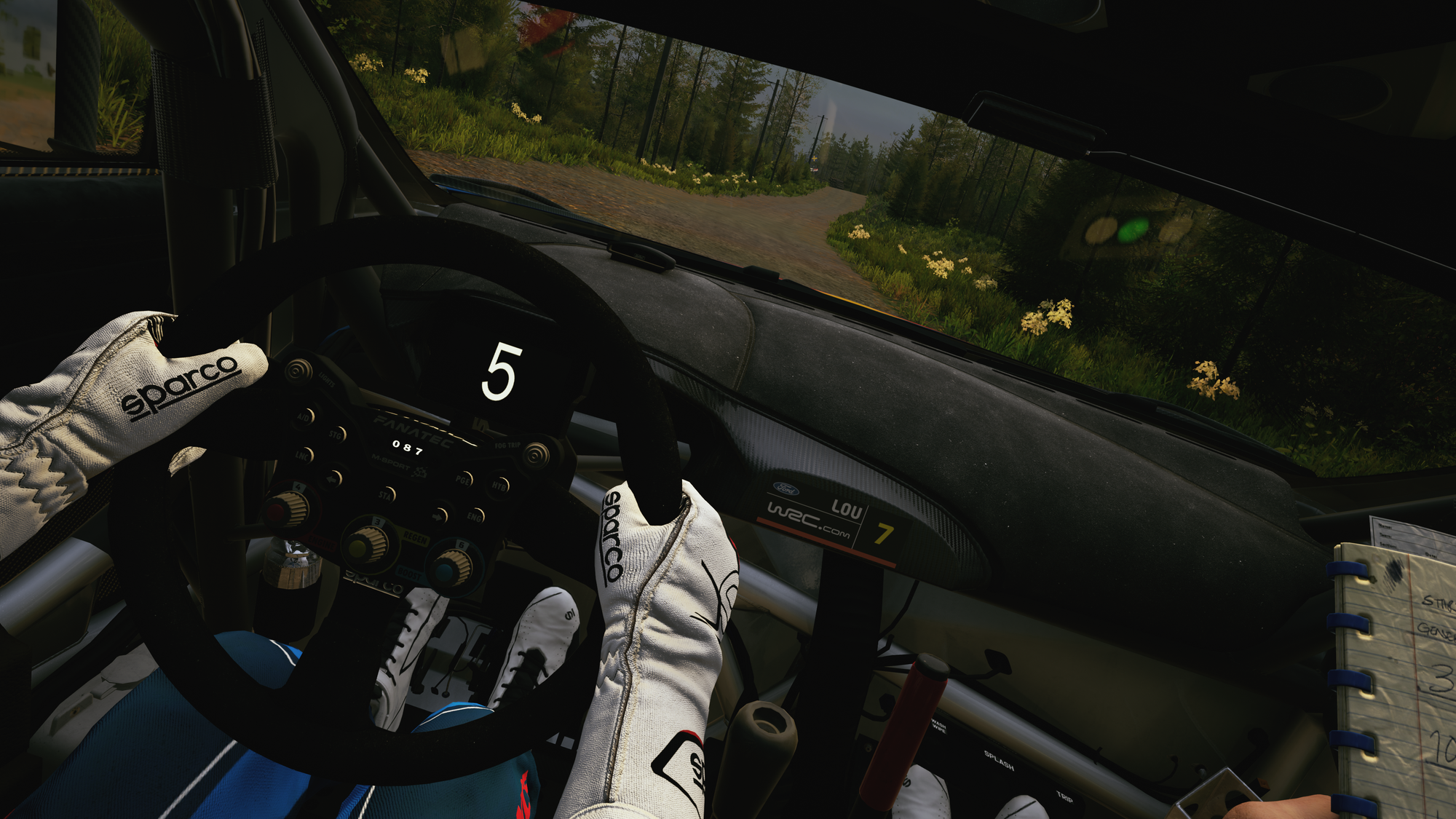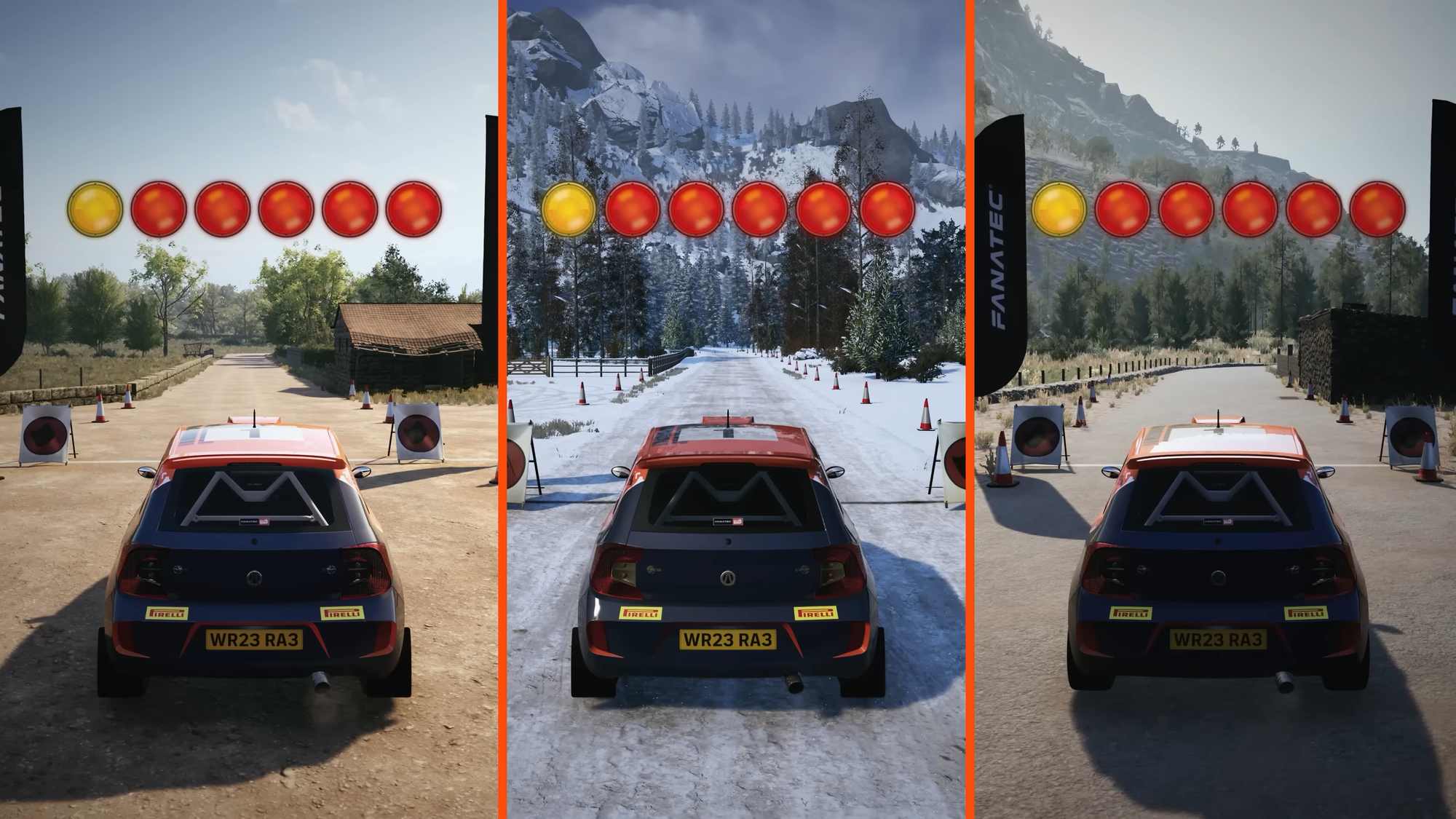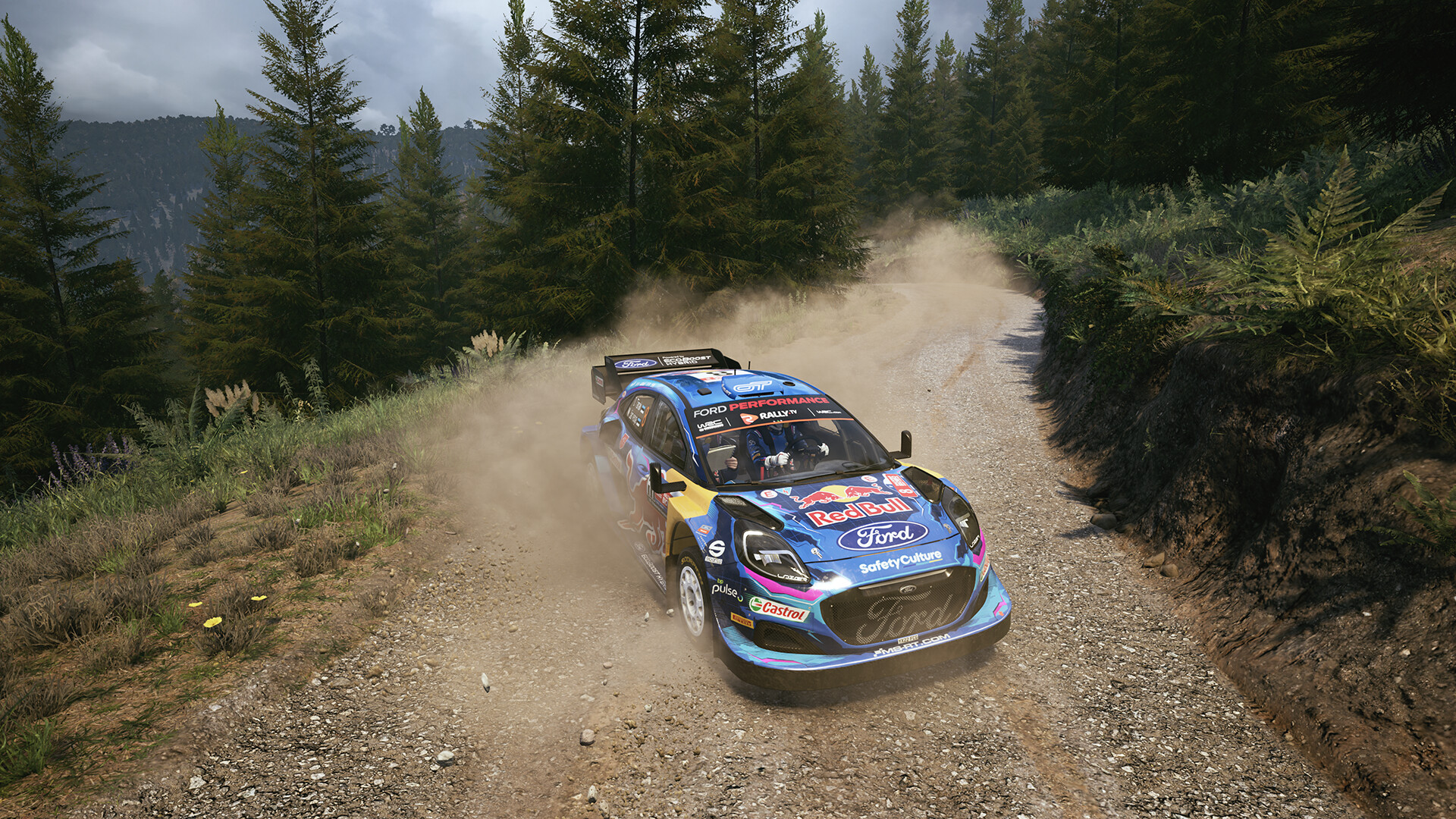EA Sports WRC recently added beta support for PC VR, but how does this rally racer fare? Read on for our full impressions.
While Codemasters continues releasing annual Formula 1 games and off-road racers, we’ve not seen the studio tackle a VR rally game since 2019’s DiRT Rally 2.0. It’s effectively a spiritual successor that’s using the official FIA World Rally Championship license, featuring over 200 rally stages across 18 locations, roughly 80 real-world cars and customizable vehicles. Following November’s flatscreen launch, Season 4 recently introduced PC VR support.
Like F1 23 and GRID Legends, every race is playable inside your VR headset with 360° vision from the driver’s seat. Everything else uses 2D menus and puts you into a theatre mode. Only gamepads and steering wheel accessories are supported and throughout this hands-on, I regularly swapped between my Thrustmaster T248 steering wheel and an official Xbox gamepad.
As someone more accustomed to circuit racing than off-road tracks, EA Sports WRC’s controls were more slippery than I initially expected. Navigating the car’s handling is an enjoyable challenge, and the ‘Rally School’ tutorials helpfully eased me into the mechanics. Assists like easier AI difficulty settings offer welcome assistance for beginners and after finding a comfortable balance, driving across these environments felt good. That’s helped by great track variety and a strong car selection.
EA Sports WRC doesn’t lack for content, either. A pleasingly expansive ‘Career’ Mode lets you choose between Junior WRC, WRC 2, or the main WRC division, measuring success against performance targets set by your benefactor, like reaching a specific position in the Drivers Championship. ‘Championship’ offers a good alternative that’s just pure rally racing, while ‘Moments’ offers a fun twist on daily challenges by basing events on WRC’s real-life history.

There’s much to like about EA Sports WRC, which makes me wish for better PC VR functionality. VR support is currently in beta, and I initially tested it several weeks ago using a Ryzen 7 2700X and Nvidia GeForce RTX 2070. I soon noticed a nauseating screen shake, even on low performance settings. I’ve since upgraded to a new PC with an RTX 4070 Ti Super and Intel i9-12900 processor and while the shaking is no longer present, other issues remain.
The most egregious problem is that when I load a career event or championship race, my headset screen often goes black, but the game continues running on my PC. This issue doesn’t disappear until you quit the game, and it occurred on at least seven occasions. That severely limits what I can currently play, though I had better luck with the tutorials, individual races against AI opponents, and online multiplayer. I mostly stuck with Quest 3 and Virtual Desktop, though using a Quest 2 had similar problems.
It’s a shame because EA Sports WRC feels great in VR when it works. Codemasters have even included a decent range of VR-specific comfort settings like adjusting the HUD, vignettes specifically for crashing, head camera height settings, and more. That doesn’t mean much when you can’t reliably play the core gameplay modes in PC VR, though. I just hope VR support improves at full release.

Following our hands-on, EA Sports offered us the chance to speak with the Creative Director, Matthew Battison. In an email-based Q&A, Battison advised that VR support was always planned despite its post-launch arrival.
“We wanted to focus first on the game itself first, so we made the decision to commence full production on VR post-release. This allowed us the time to develop, refine, and test the VR experience and launch as a beta within the first part of the WRC season, so our players could help shape it.”
Codemasters previously stated that it’s calling this a beta because it’s a new project for the team, noting that VR support for DiRT Rally 2.0 used external partners while EA Sports WRC is an internal effort. Battison explained this internal approach allowed them to ensure they had full control over the final project, creating “a more coherent and immersive experience.”
Querying what challenges introducing VR support brings, Battison states the main difficulties are centered around hardware and technical aspects. Codemasters have sought to overcome this by adding customizable comfort settings like a fixed horizon and crash vignette.
“We know our players have a wide variety of hardware setups and VR headsets, so it was crucial to ensure that our VR support was accessible to all. But we wanted to do more than just make it accessible. We wanted to make it immersive and enjoyable for our players. This meant we had to find the right balance between creating an immersive experience without causing discomfort.”

Regarding other platforms, Codemasters previously confirmed EA Sports WRC will remain PC VR exclusive, so I questioned why the studio wasn’t considering PSVR 2 support. Battison declined to comment.
As for the next steps, Codemasters is currently analyzing player feedback to develop a roadmap. Battison calls this “instrumental” in shaping EA Sports WRC’s VR support going forward. Because of this, the VR beta currently doesn’t have an end date.
EA Sports WRC is available now on SteamVR, alongside a flatscreen version on PC, PS5 and Xbox Series X|S.





